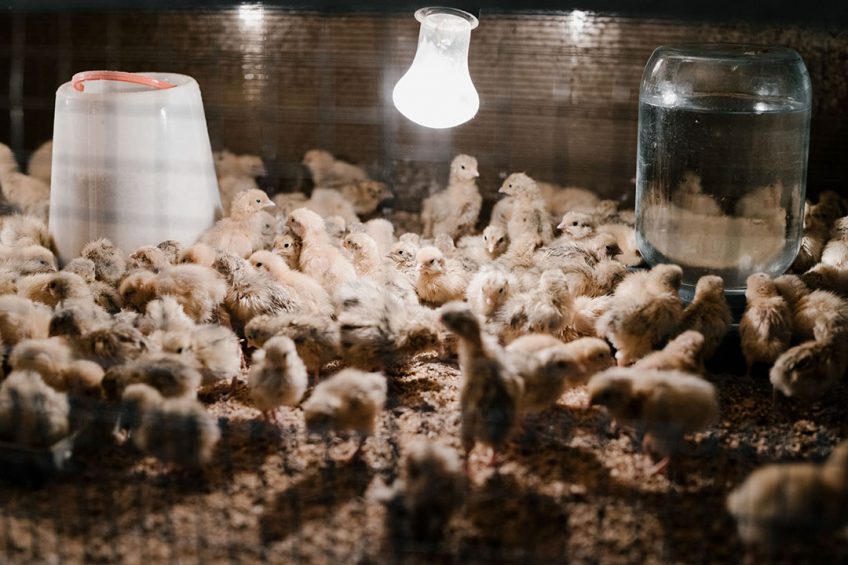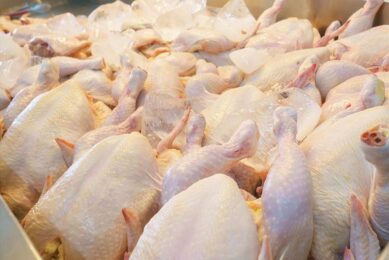Angola continues to rely on poultry imports

It is unlikely that Angola’s poultry sector will expand in 2021.
Angola relies heavily on imports of poultry meat. However, is now self-sufficient in egg production with an estimated 1 billion eggs produced per year.
In 2019, poultry meat production in Angola was estimated at 28,185 mt, a 3.7% increase from 2018.
Production consists of:
- Backyard (5 – 15 chickens),
- Smallholders organised in 120 associates through National Association of Poultry Producers of Angola with between 1,000 and 50,000 chickens (mainly layers)
- Private companies with the latest production technology (more than 50,000 layers).
- There are 4 commercial farms producing chicken meat.
Poultry production 2021: Remain stable with no expansion
Poultry production is forecast to remain stable in 2021, and although it is unlikely that the sector will expand due to a lack of foreign exchange and the prohibition of genetically engineered products, the Angolan government is investing in national production as it seeks to diversify the economy.
![]() Global poultry industry case studies
Global poultry industry case studies
Taking a deeper look into poultry production worldwide
Access to affordable animal feed: A challenge
Access to affordable animal feed is a major factor in the country being unable to aggressively expand chicken meat production. Having reportedly produced just 2.3 million mt of maize in 2018, Angola does not produce sufficient grains and oilseeds to support the poultry sector. Feed is therefore imported, increasing the cost of production significantly.
![]() Futures market
Futures market
Overview of futures prices for: corn, wheat and soybean
Obtaining foreign currency to purchase chicks and animal feed
In addition, the local currency, called the kwanza, devalued 391% between 2014 and 2019.
After the 2015 economic crisis and drop in global oil prices, it became more difficult to convert the local Angolan currency into foreign currency to purchase chicks (mainly coming from Netherlands), animal feed, equipment and vaccines. US dollar transaction services have been unavailable in Angola since November 2016, making the corresponding foreign banks cut ties with Angola.
Abattoirs in Angola
There are a few large abattoirs and several small-scale ones serving local producers. The largest abattoir has the capacity to process 2,500 birds per hour and 80,000 birds per week. Some estimates note that it is 4 times more expensive per kilogram to purchase domestic chicken meat compared to imported chicken meat.
Drop in poultry consumption
Consumption has dropped a third on the 2019 high, a year in which Angolan consumers spent approximately US$ 256 on poultry meat. Consumption in 2021 is expected to stabilise after a significantly drop in 2020. Imported chicken meat is the most affordable and consumed animal protein in Angola, however, demand has been depressed due to a reduction in consumer purchasing power based on the continuous devaluation of the Angolan kwanza. Covid-19’s impact on oil prices has severely affected the economy as 99% of the Angolan revenues rely on oil exports.
Prospects for poultry production in Angola
Poultry farming in the African country Angola is developing, with it now being self-sufficient in egg production, but still reliant on imports for poultrymeat.
Heavily reliant on poultry imports
Imports, which account for about 85% of consumption, are forecast to remain flat in 2021 due to weak domestic demand on reduced purchasing power driven by economic challenges. Angola imported 266,000 mt of poultry meat in 2019 with the US being the largest supplier. In 2019, Angola was the 6th largest market by value for US poultry products (US$ 150 million).
Govt seeks to reduce reliance on imports
The Angolan government, seeking to reduce its reliance on imports, has identified numerous products (mainly agricultural, including poultry) for which importers must prove that there is insufficient local production. However, because demand is so high and production is limited, poultry imports have not yet been restricted, although the new requirements have created additional bureaucratic hurdles for importers.
Many of the large-scale commercial importers have fully automated cold storage facilities, the largest of which has a storage capacity of over 15,000 mt and can hold 450 containers. These types of importers are organised across the entire value chain.
Self-sufficient in eggs
In April 2015, eggs could only be imported if there was less than 28 days from production to entry into Angola. This measure effectively ended egg imports and increased domestic production. The country is now self-sufficient, and the National Association of Poultry Producers of Angola estimates egg production between 65 and 70 million eggs per month.
The information in this article has been extracted from a USDA report prepared by Ricardo Dias




![Birthe Steenberg, AVEC’s Secretary General: “Our [poultry] sector operates under the highest standards of animal welfare, biosecurity and sustainability in the world. Photo: Canva](https://www.poultryworld.net/app/uploads/2024/10/Untitled-design-79-389x260.jpeg)








